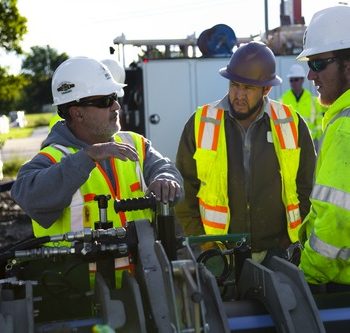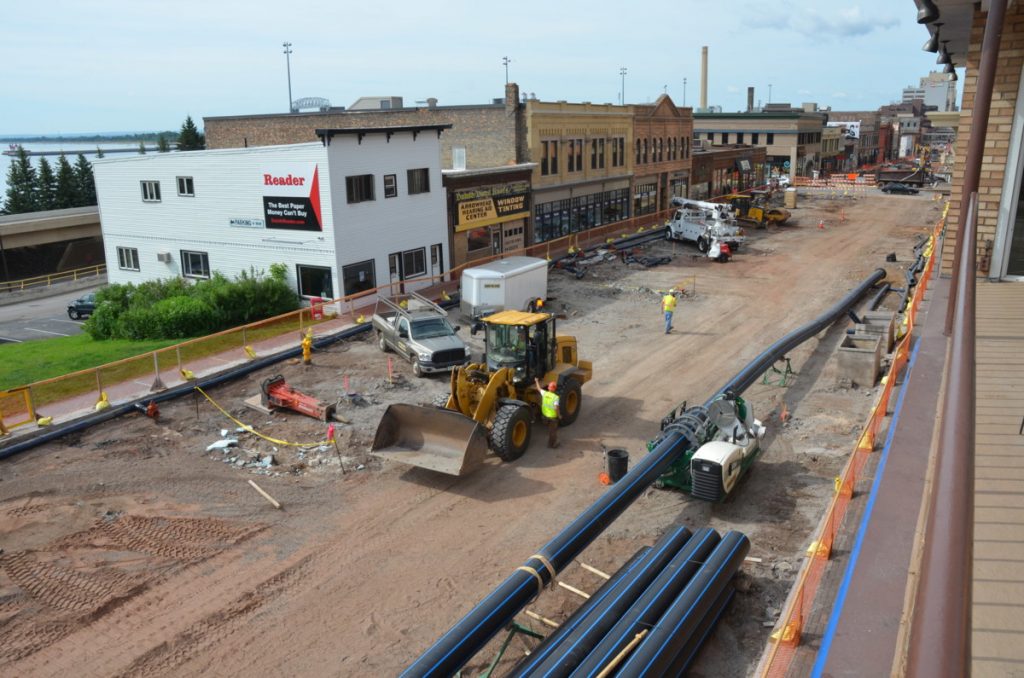
The best predictor of future behavior is past behavior. This is a dependable indicator in psychology, but two cities in Minnesota found this to be especially true when applied to pipe performance.
After successful outcomes with medium-density polyethylene pipe used for decades in their city-owned and operated natural gas systems, both Duluth and Austin standardized HDPE for all of their water mains and have found that many of the same qualities that made it great for gas – leak-free joints, easy installation and long life – have made it an environmentally-sound choice for water mains as well.
Duluth, a port city of nearly 86,000, first tried HDPE on the water main side in 2002. Eric Shaffer, chief engineer for utilities at Duluth, was a consultant at the time and hired to design what would be his first big job for an 8” HDPE water main.
“At that time, engineering and their construction crew came together and said now’s the time to make the switch to PE, it’s worked so well for gas,” Shaffer said.
Today, Duluth’s water loss rate continues to decline as it replaces more and more of their old pipeline infrastructure with HDPE. Properly fused HDPE joints are leak proof and Duluth has not had a single butt fusion failure since they started using it. Water losses were 16.5 percent in 2012 and much higher before that. By 2018, water loss had fallen to 11 percent. This dramatic reduction in loss allowed Duluth to transition to a smaller supply pump creating further savings in pumping costs.
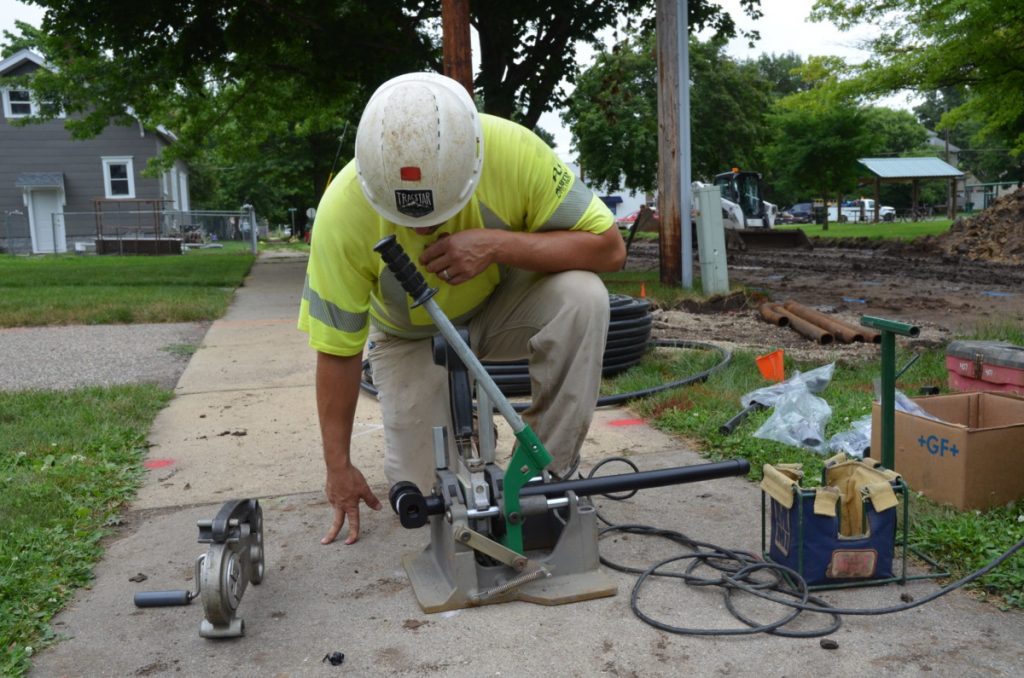
“We now use HDPE for everything and feel that it is the best product available and the most cost effective considering the installation and the long-term maintenance,” said Shaffer.
Austin, a city of 25,000 residents, has been using HDPE for its water mains for the past 21 years with HDPE representing about 31 percent of the water pipe in the ground. Todd Jorgenson, gas and water operations director for Austin Utilities, said the number of water line breaks is about half of what they were experiencing 20 years ago.
“Our crews do both water and gas so the transition to water was relatively easy other than having to buy larger (pipe fusion) equipment,” Jorgenson said. “We’re certainly happy with the results. Our crews — I don’t know if they’d want to go back to ductile iron. We have a lot younger staff now and that’s all they know.”
HDPE REPLACEMENT CYCLES
In Duluth, there is still more cast iron water pipe in the ground in sizes up to 48” followed by ductile iron, HDPE and steel. The HDPE switch has been a gradual process beginning with larger footage water projects using 8” pipe and on specialty projects using pipe bursting and horizontal directional drilling (HDD) technology.
Currently, Duluth replaces about two miles of water distribution pipeline a year. Within the next five years, they are looking to replace four miles of pipeline a year which would set them on an ideal 100-year cycle.
Austin’s replaces two to three miles of water lines every year putting them on an impressive 46- to 69-year water cycle. Currently, about 31 percent of the water mains are HDPE. And on a positive note for public health, when old service lines to the residence are lead pipe they replace them with 1” HDPE service lines.
“If we have a new project, it’s always going to be HDPE.”
— Todd Jorgenson, Gas and Water Operations Director, Austin Utilities
On the gas side, they replace one to two miles a year with HDPE. Currently there is about a 50/50 mix of steel versus HDPE for gas pipe.
“If we have a new project, it’s always going to be HDPE,” Jorgenson said.
There’s only been one butt fusion failure on gas lines, which was attributed to operator error, and none on the water side.
“I think our guys do a good job, they’re the ones who are going to have to fix it if it fails,” Jorgenson said.
Both Shaffer and Jorgenson serve on the Municipal Advisory Board of the Plastics Pipe Institute (PPI) and share their experiences with other colleagues in the utility industry who are unfamiliar HDPE and have not developed a comfort level with it yet.
“Once they use it, they’ll see the benefits especially when you see the HDD option,” Jorgenson said. “It’s just a natural progression.”
NEIGHBORHOOD INFRASTRUCTURE
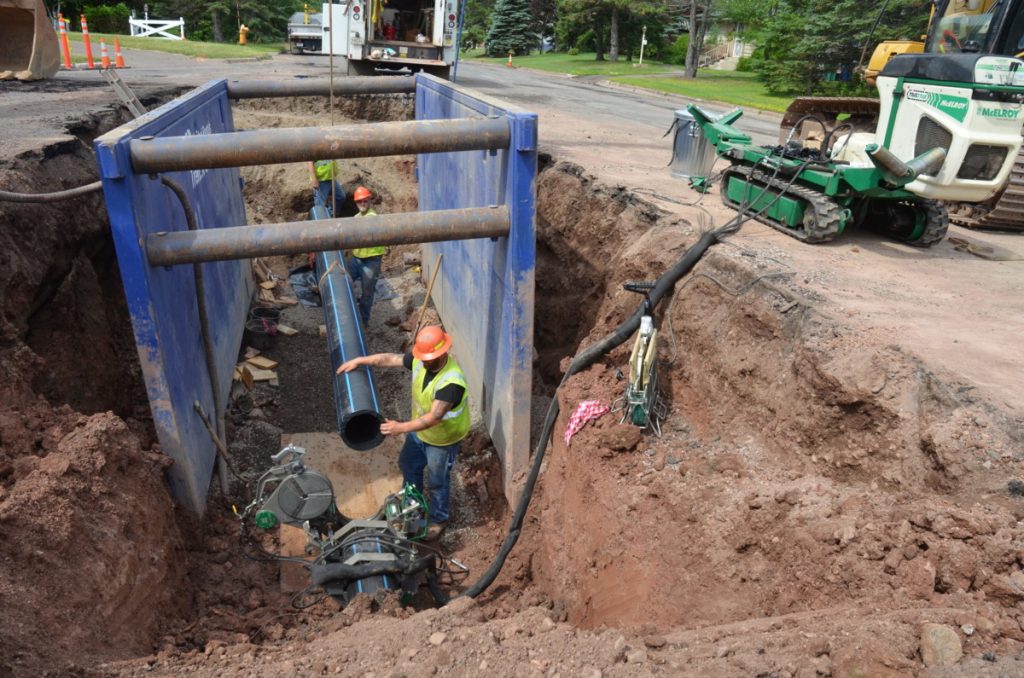
For both cities, there is a flurry of HDPE activity during the summer since Minnesota’s construction window only lasts from April to October. This past July, Austin’s fusion crews were replacing a 1940s cast iron main with 6” HDPE. They make it a practice of timing their HDPE installations with the street department’s replacement schedule so that they’re installing pipe while the street is already under construction.
“In most cases, that’s what we look at so we don’t have to pay to tear up the street and put it back again,” Jorgenson said.
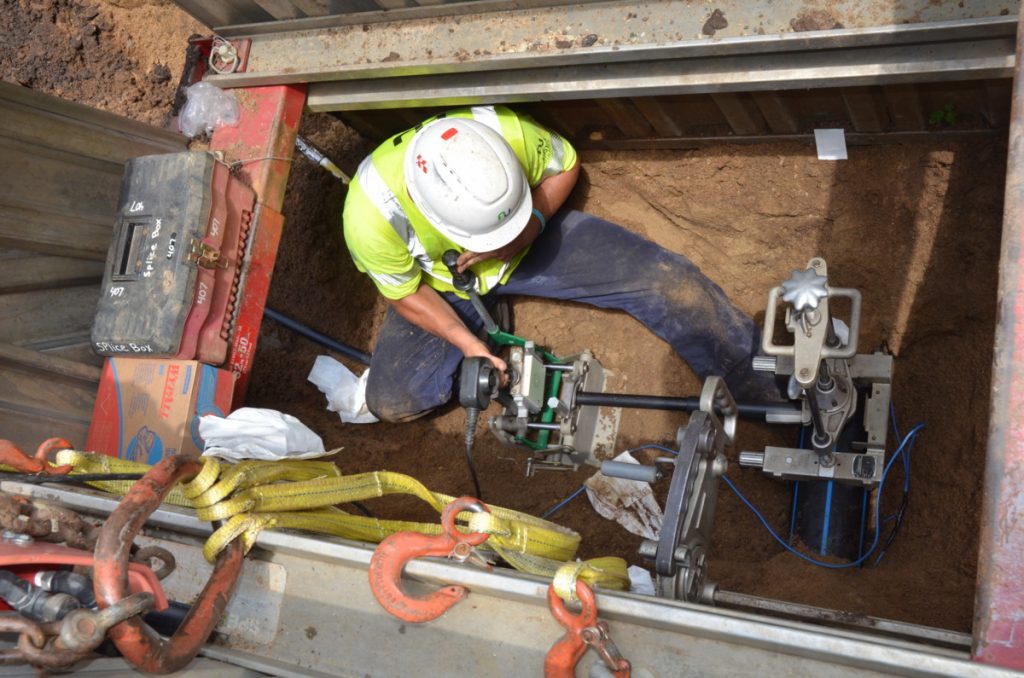
Austin’s 14-member crew is a well-oiled team that operates many types of McElroy fusion equipment. They own manual machines for butt and saddle fusion as well as rolling and self-contained, self–propelled hydraulic tracked fusion machines for larger-diameter pipe.
“If we didn’t feel we were getting a quality product, we’d be looking for something else. It seems to last a long time,” Jorgenson said.
Most of the pipe in Duluth’s older Lakeside neighborhood is post World War II era cast iron pipe. They have had a lot of problems with it because of Duluth’s highly corrosive, clay soil and were spending a lot of time and money cutting open the street and repairing water line breaks.
They discovered that it’s better and costs less to replace the pipe with HDPE, which does not corrode, and install it using trenchless pipe bursting technology instead of open cut. HDPE is ideal for trenchless applications because of its flexibility and strength. Fused joints are as strong or stronger than the pipe itself which makes it ideal for holding up to pulling forces.
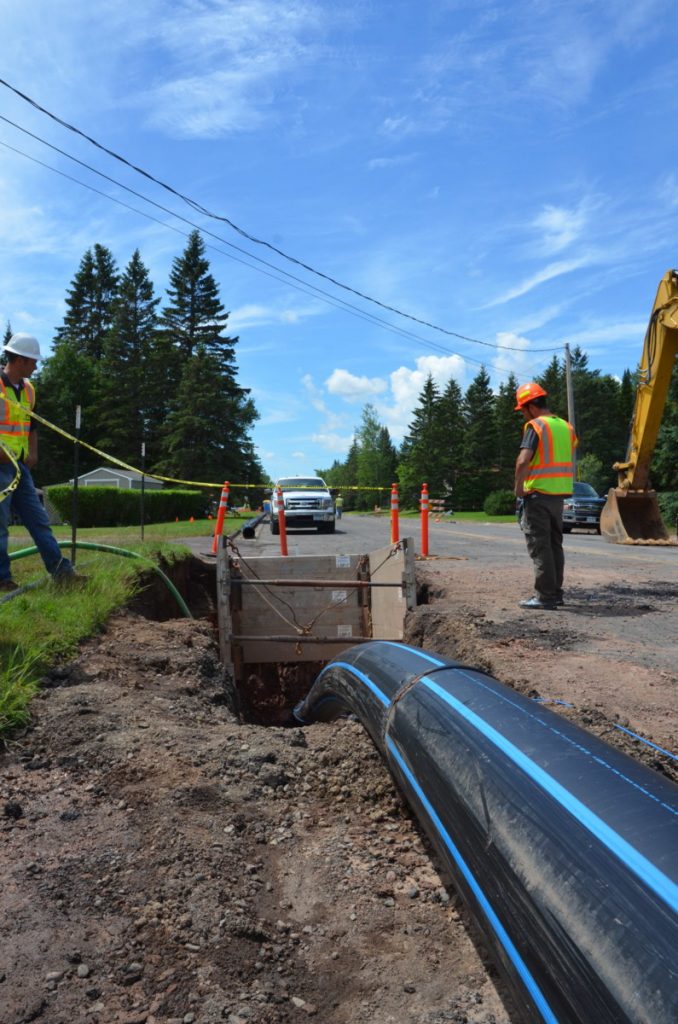
Duluth’s fusion crew was in full force with this winning combination last summer as they were bursting a 6” cast iron main with 12” HDPE using TT Technologies static pipe bursting equipment. Altogether, they replaced some 2,600 feet of aged-out cast iron pipe with modern HDPE.
Scott Hegg, engineering technician, said that everyone is moving towards trenchless to rehabilitate municipal water infrastructures. In fact, other surrounding towns are in varying stages of following suit including Superior and Two Harbors.
Duluth also prefers to use McElroy fusion equipment. The TracStar® machine allows them to maneuver down the street on a self-contained track system. They can even use it to perform butt fusions on transition connections by removing the carriage from the vehicle and lowering it directly in the ditch. They simply disconnect the hydraulic hoses and pull a pin. The ability to do a butt fusion reduces costs for electrofusion fittings.
“We like to put the carriage in the ditch,” said Hegg. “We do it every time.”
DOWNTOWN REVITALIZATION
Over time, Duluth started using HDPE for their underground infrastructure in all their capital projects. The Superior Street “Kick Up the Bricks” reconstruction project underway in the heart of downtown Duluth is probably one of the most spectacular examples.
The three-year, three-phase project is poised to transform one of the city’s oldest commercial streets overlooking the shore of Lake Superior.
As Mayor Emily Larson said at the groundbreaking in 2018, “It’s going to incorporate the entrepreneurial spirit of our downtown while also honoring the long-term investment of our downtown community that has been here for decades.”
The project calls for the replacement of an 1880s 16” cast iron water main that lived in the day of mule-drawn cars on rails. Unsurprisingly, this line has suffered multiple breaks in recent years and the city is looking forward to a reliable, modern system. The new main will be 20” HDPE pipe with branch mains along perpendicular avenues in 8”, 12” and 20” pipe sizes. It’s a total of 11 city blocks or 5,237 feet of new HDPE.
It also includes converting an 85-year-old steam heat system to a more energy efficient, closed-loop hot water system that allows water to circulate to buildings that need it before returning to a plant where the same water is reheated. The new system will reduce water use, energy use and costs.
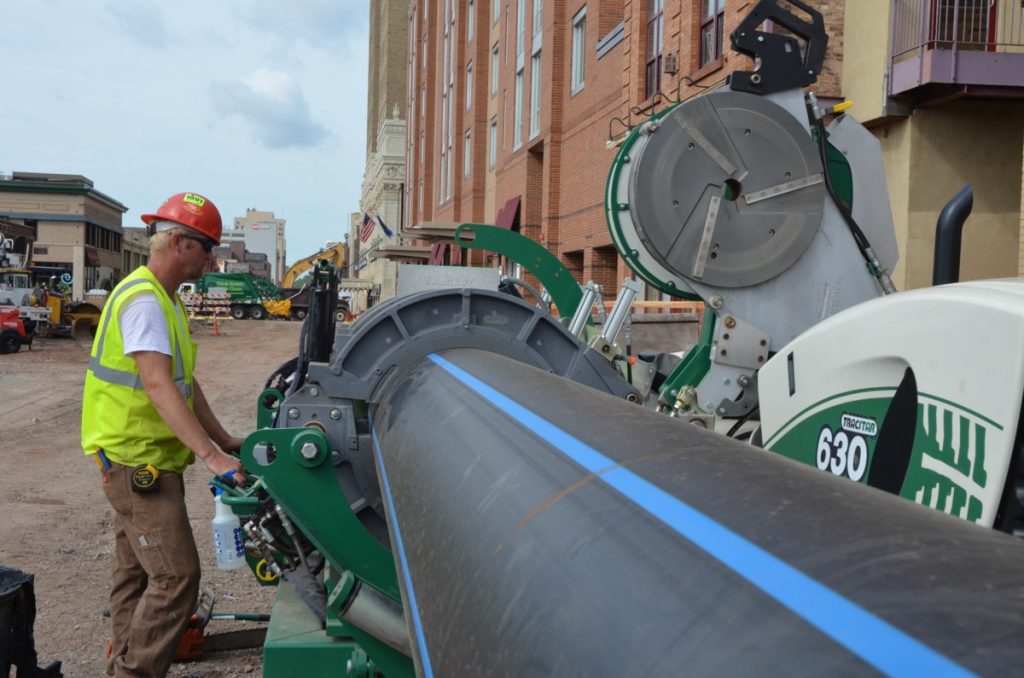
In efforts to help local businesses during construction, they kept the sidewalks and pedestrian crossways open during construction, built a temporary water line and offered $1 parking.
For Northland Constructors, the available space for the installation of the water main is severely restricted by other utilities including sanitary sewer, storm water, natural gas, central hot water and steam, electric and numerous telecommunications facilities.
In an intricate design by the LHB/SRF Consulting Group, the pipe weaves through, over and under all these facilities for the entire 11 block stretch.
“The downtown has multi-story buildings constructed right to the edge of the right of way. In addition, the sidewalks needed to remain open during construction to access local businesses,” Shaffer said.
It was helpful that they didn’t have to haul around extra power equipment for their fusion machine when they were installing the water main. The McElroy TracStar 630 Series 2 is self-contained with an on-board generator to power its heater which is used to melt the pipe ends, a key part of the fusion process that they would be utilizing for each stick of pipe on the project.
Summer 2020 will be the final construction phase for this rebranding of Duluth’s downtown. City leaders believe the reconstructed street and all its amenities will serve as a catalyst for new growth and development while also preserving the lifeblood of their downtown core. Their efforts demonstrate once again that no matter where you live — what’s underground matters.
